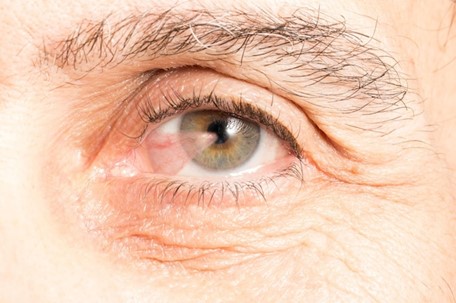Pterygium is a common eye condition characterized by a growth of tissue on the conjunctiva, which is the clear membrane that covers the white part of the eye.
A non-cancerous growth that typically appears on the inner corner of the eye, though it can also occur on the outer corner. It often starts as a small, raised area of tissue on the conjunctiva and may gradually grow over time. The growth is usually triangular-shaped and can extend onto the cornea, potentially affecting vision if it grows large enough.
Causes
- Chronic exposure to ultraviolet (UV) light from the sun is the primary risk factor for developing pterygium.
- Dry, dusty, or windy environments can also contribute to its development.
- Individuals who spend a significant amount of time outdoors, especially in sunny climates, are at higher risk.
Symptoms
- Redness and inflammation of the affected eye.
- Gritty or itchy sensation in the eye.
- Blurred vision, particularly if the pterygium grows over the cornea.
- Feeling of dryness or irritation.
Diagnosis
- Diagnosis is typically made through a comprehensive eye examination by an ophthalmologist.
- The doctor will assess the size and location of the pterygium, its effect on vision, and any associated symptoms.
Treatment Options:
- Conservative Management:
Lubricating eye drops or artificial tears to alleviate dryness and discomfort. Wearing sunglasses with UV protection and wide-brimmed hats to reduce UV exposure.
- Surgical Removal:
- Pterygium causes significant discomfort, affects vision, or grows large enough to threaten the cornea.
- Surgical techniques include simple excision, followed by tissue grafting to reduce the risk of recurrence.
- Recovery typically involves using eye drops and avoiding strenuous activities that could strain the eyes.
Prevention:
- Minimize exposure to UV light by wearing protective eyewear.
- Use lubricating eye drops in dry or dusty environments to keep the eyes moist.
- Regular eye exams to monitor any changes in the eyes, especially for those at higher risk due to outdoor activities or environmental exposure.
Pterygium is a benign growth on the eye’s conjunctiva, often caused by UV exposure. While it can be managed with conservative measures like eye drops and sunglasses, surgical removal may be necessary if it affects vision or causes discomfort. Preventive measures and regular eye care are essential for minimizing risks and ensuring optimal eye health.


